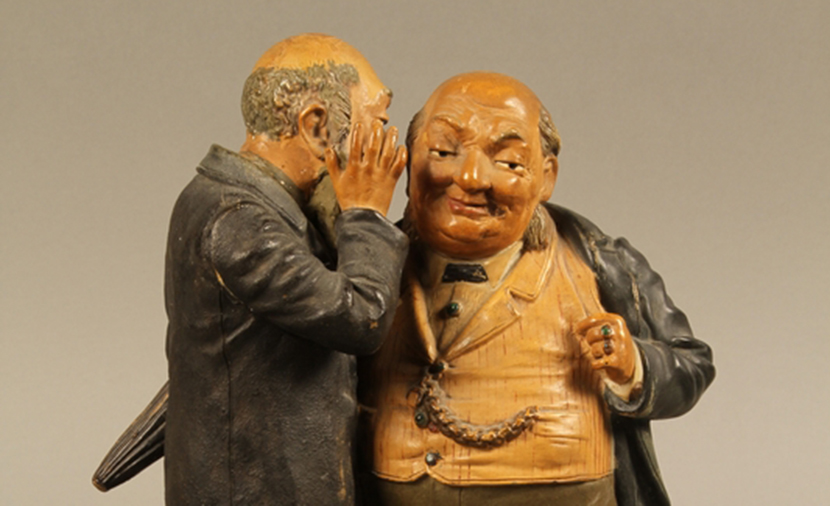Back in 2017, when Donald Trump was newly inaugurated to the American presidency, and what was then known as the alt-right was riding its brief Internet-fueled period of chaotic cultural ascendancy, some of the right’s most esoteric and extreme thinkers began to tip their intellectual hand. Most prominent among them—at least in the United States—was Steve Bannon, at one time Trump’s ideological right-hand-man, who in a February 2017 speech to the Vatican made headlines by alluding to one of the 20th century’s most controversial thinkers, the Italian mystic, occultist, and self-proclaimed superfascist Julius Evola. At surface-level, it was an offhand reference—Bannon was describing Alexander Dugin, a similarly occult-minded Russian philosopher whose relationship with Vladimir Putin was sometimes compared to Bannon’s own with Trump. But to those attuned to the history of the mystic 19th-century movement known as Traditionalism, it was a revelatory dog-whistle, perhaps even a key to Bannon’s whole ideology. Like many of the figures central to the movements known as “neo-reactionary,” “alt-right,” and more recently, the “New Right,” including the British philosopher Nick Land, and the pseudonymous, improbably ubiquitous Twitter author known as Bronze Age Pervert, Bannon has a well-documented interest in Western esotericism, and in particular the sort of Traditionalism espoused by Evola.
This Traditionalism was deeply rooted in the tensions of the 19th century. Briefly summarized, it involves a belief in the transmission of a secret spiritual wisdom to chosen initiates—a wisdom underpinning the world’s more seemingly accessible organized religions. As liberal democracy, political equality, and industrial urbanization transformed the European landscape, those most ill-at-ease in the changing social order often sought refuge in an atavistic conception of the imagined past, in visions of biological rootedness inextricable from Volk mythology and “national epic,” in visions of (what they saw to be) pre-Christian or pagan mythologies that celebrated natural and spiritual hierarchies. Such visions centered around the person of a heroic (and usual Aryan) warrior whose strength and inborn position in the dominance hierarchy would be a vital counterweight to the faceless throngs of the modern urban crowd, in which everybody and every community is identical, exchangeable, and indistinguishable.
And, as Tamara Berens’s recent Mosaic essay, “From Coy to Goy,” makes clear, this ideology had both an implicit and explicit villain: the Jew. The Jew was coded as the “rootless cosmopolitan,” the disloyal outsider who controlled not things-in-themselves—not land, not rivers, not farms, not even, as John Ganz notes in his recent excellent essay on reactionary modernism, machinery—but instead only something magical and disembodied: capital itself. The Jew was in this schema the ultimate modern man, whose trade was not in the earth, or indeed in anything material, but rather in the realm of speculation: in money, in ideals. And so the Jew became the scapegoat for a century’s worth of frustration with Enlightenment modernity, with democracy, and with what was seen as a society uprooted.
For denizens of the long 19th century, the name historians give to the period running from the French revolution to the outbreak of World War I, the “Jewish question” was inextricable from these fomenting problems of both national identity and spiritual alienation. With the 1789 publication of the Declaration of the Rights of Man, the French document that encoded the “citizen” as a human being whose rights were founded not in blood or birth but in participation in civil society, the figure of the Jewish person was culturally understood as being the primary beneficiary, if not the outright manufacturer, of this new post-Enlightenment age. To quote a character in the French novelist Honoré de Balzac’s Treatise on Elegant Living, “the natural son of a millionaire bath attendant and a man of talent have the same rights as the son of a count.” Still, the Jew was associated with alienation: with the invisible strings of money and capital, with “citizenship” and other intellectualized forms of political belonging, with urbanization and industrialization and life lived, in this new modern age, without the old need for physical or martial strength.
Over the same period, the movement now known as the Counter-Enlightenment had a very different attitude towards Jews; the Romantics and reactionaries and radicals who comprised it used the figure of the Jew as a convenient opponent for their own self-understanding. The idealized man of the Volk lived by his strength, not by his wits. He did not buy what his family might need; he made it. He worked his own land, onto which he had been born, and he belonged to it by something more mystical and primal than the social contract. Though nominally Christian, his self-understanding was rooted in the specific pagan stories of his particular village. (Think Richard Wagner, the Brothers Grimm, and ultimately Nietzsche and then Evola.) Enlightenment anti-Semitism, in other words, was inextricably bound up with a counterweight, a distinctly modern anti-modernity—a fetishization of a pre-capitalist, pre-industrial lost age of belonging and spiritual serenity. Or, as Evola himself titled his 1934 manifesto, a Revolt Against the Modern World. At its most extreme, these Counter-Enlightenment movements even turned their ire on Christianity, which they saw as inextricably tainted by the distinctly Jewish obsession with equality and democracy at the expense of natural hierarchy. Thus does Evola, in his 1927 Pagan Imperialism, declare that “Christianity is at the root of the evil that has corrupted the West.”
In more than a few regards, the cultural chaos of our own era—its decadence, its spiritual restlessness, its pursuit of transgression for transgression’s sake—seems to map perfectly onto the anxieties of the 19th century. And the anti-Semitism of today’s far right is no less deeply rooted in a neo-pagan obsession with rootedness than that of their Wagnerian forebears. There are of course, as Berens notes, the obvious examples: neo-Nazi groups like the Wolves of Vinland that explicitly celebrated their pagan forebears. But then, she argues, it is with Christian nationalism, rather than modern paganism, that contemporary anti-Enlightenment anti-Semitism finds its natural home.
I’m less sure. Certainly, when it comes to the official stated affiliations of many of today’s most prominent and vocal anti-Semites—from Kanye West to Marjorie Taylor Greene—this is true. And the most explicit pagan white nationalists have since the 2017 Charlottesville attacks largely receded from public view. But, in the realm of today’s “redpilled” Internet culture, religious identification is perhaps a far more slippery proposition than once it was. And what I call Nietzschean pagan atavism—involving an obsession with secret wisdom, with primal and supposedly evolutionary dominance hierarchies, with physical strength and paleo diets as integral to a revived heroic masculinity, and with a shuddering disgust at all things coded as effeminate and, inevitably, as “Jewish” (soy, for instance, or electric rather than gas stovetop burners)—is an integral part of the implicit ideology and metaphysics of today’s far right. Wokeness—the new target for sometimes reasonable anxieties about equality, democracy, and urbanization—is to today’s pagan atavists what Judeo-Christianity and its inherent “slave morality” were to Nietzsche and Evola. And the language of culture-war-as-cosmic-battle can be found in several of today’s most prominent right-wing thinkers, including Jordan Peterson and Peter Thiel, both of whom profess Christian affiliation while hoping that Christianity can be instrumental in the restoration of pre-modern virtues.
Consider, for example, a recent speech delivered by Peter Thiel this spring at a gala dinner for the New Criterion: “on a deeper level,” Thiel says, “the multicultural agenda is very entangled with the Judeo-Christian tradition. . . . That tradition is strongly identified with the side of the victim.” He grants that “The so-called woke religion is a perversion of this Judeo-Christian tradition, but nonetheless closely adjacent to it,” but does not elucidate what might constitute the difference. So too does he name as a potential ideological alternative “a kind of Nietzschean, anti-diversity move that I find incredibly tempting in an emotional sense”—Thiel cites Bronze Age Pervert here—before eliding why, or indeed if, he rejects that alternative, pointing instead, without clarification, to what he sees as Nietzsche’s deathbed realization: “that the modern West would be a world ruled by the victim.” This is a realization that seems less philosophical than prophetic. The victim, Thiel suggests, has indeed won in modernity. Whether that is a good thing or not he leaves ambiguous. The dichotomy Thiel sets up for his audience—the decadence of Western weakness as downstream of Judeo-Christian ideas of equality and democracy, set against the Nietzschean paganism of strength-veneration and outright racism—matches closely Evola’s occult battleground. There, the strong and the spiritually secretive transmit to each other true knowledge, knowledge inevitably involving “human biodiversity,” “race realism,” and other such unspeakable so-called truths, knowledge to which the sheeple masses can have little access and instead naively assent to the suspiciously Semitic bromides of human equality.
In an increasingly alienated, secular era, many people of faith—or, indeed, anyone who is drawn to the dictates of moral realism, are ever hungrier for the real, for rootedness and home and, as one Internet idiom would have it, touching grass. But the Evolist vision of anti-modern return, which transforms realism into knowledge reserved for initiates—indeed, initiates of certain racial backgrounds—serves as a reminder of the philosophical perils of valorizing uncritically the natural, or of what is, to us another Internet term, “based.” The desire for an enchanted world, when misdirected, can lead politically, into violence and apocalypse. There are spirits too dangerous to summon.
More about: Alt-Right, Anti-Semitism, Far right, History & Ideas, Politics & Current Affairs







